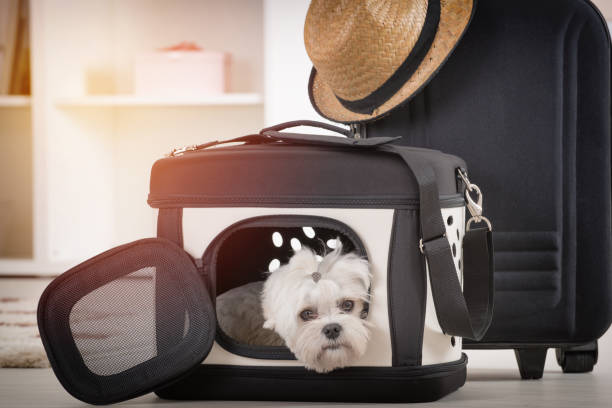How to move house with your pet
Make sure to set up a safe space for your pet to sleep and relax in.

Moving house is no easy task for humans, and adding your pet to the mix could bring more stress and inconvenience.
Pets are creatures of habit, and are not likely to be good moving house companions. They get scared and anxious, especially as boxes and suitcases pile up.
Following a few simple rules can, however, quell any worries you may have on how to best accommodate your pets, as your moving day fast approaches. These tips will also attempt to make the most of the situation, despite the challenges.
Remember to be organised and patient throughout the move, if not with the person or people helping you move, definitely with your pet.

Picture: iStock
Get organised
Keep tabs on where you pack your pets’ food, toys and blankets, and equipment (poop scoopers, litter, litter boxes, and grooming kit), and set these items aside to find and set up easily. Prepare an overnight kit with food, litter, toys and grooming tools, for easy access and to keep your pets comfortable.
Update their information on their microchip as soon as you settle in to your new address.
Move your entire house before you move your pet, and set up as much as you can before picking up your fur baby. Set up a room in the house with your pet’s toys and food, and introduce them to the house slowly. But initially, let them rest in that room and make it their safe space, to reduce any anxiety.
The road trip
Transport your pet in your own vehicle, or one they’ve travelled in before, if possible.
Cats and small dogs should be put in a carrier or cage, which can be placed in the backseat and secured with a safety belt. If your pet is not a fan of travelling by car, place its favourite blanket over the carrier. Larger dogs can be put in a kennel or cage, or placed on the backseat of the car.

Picture: iStock
Pet-proofing and settling into your new home
Scout out your new digs for any nooks and crannies they could worm their way into, any exposed wires, and ensure that your cats cannot climb out of the windows.
Do not let your pet out of its carrier as soon as you enter a new home – they need to be introduced into a new space gradually. Do this one room at a time, and restrict their movements to one room at a time.
Make sure to set up a safe space for them to sleep and relax in. Cats should be kept indoors for a few days.
Source: You Move Me blog, ASPCA
For more news your way, download The Citizen’s app for iOS and Android.







